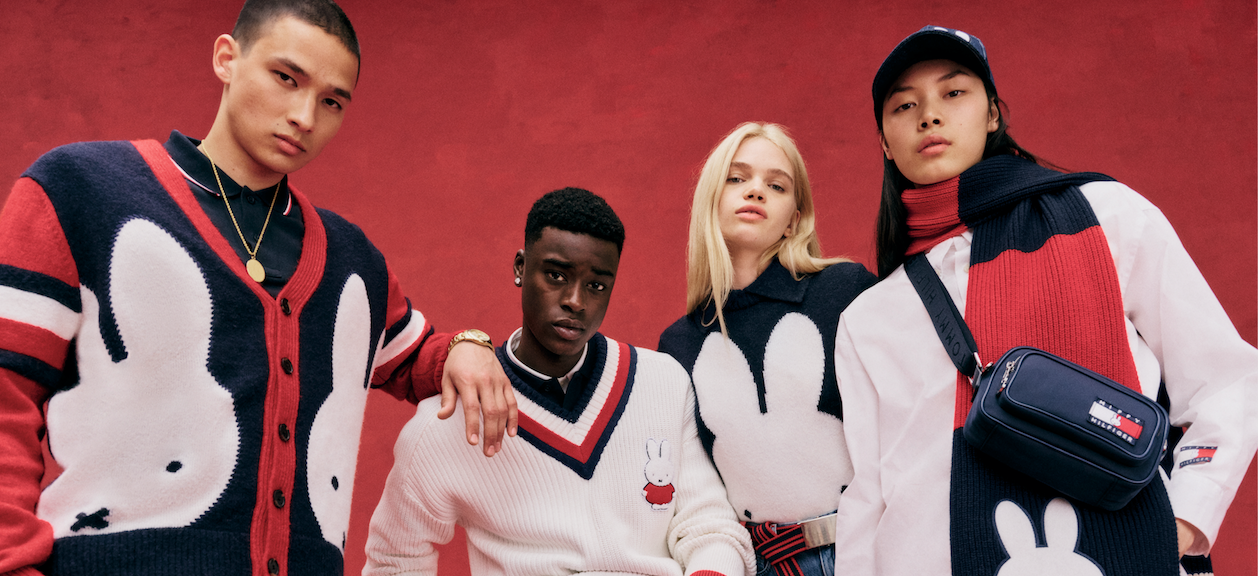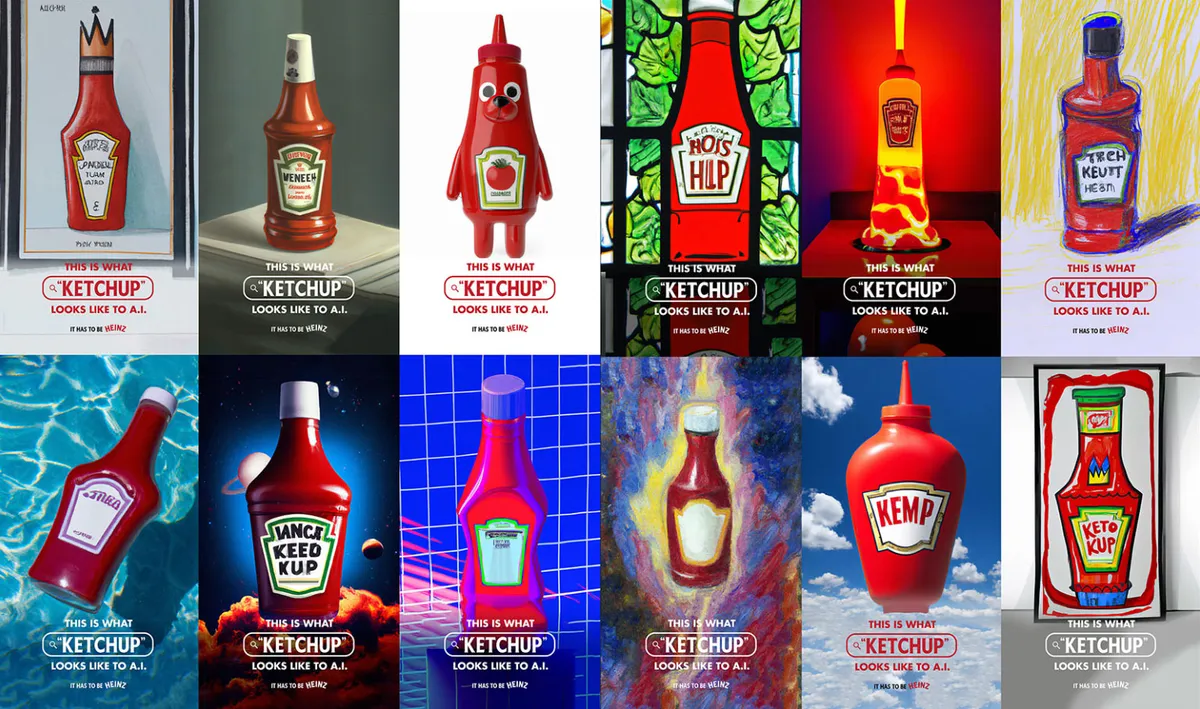Top Advertising and Marketing Trends You Should Know About
2024-06-27

The world of advertising and marketing is always changing, and keeping up with the latest trends is key for brands that want to connect with their audience. As we look ahead, several big trends are shaping the landscape.
These trends reflect a deeper understanding of consumer preferences and a commitment to creating authentic, engaging, and purpose-driven campaigns.
Let's dive into the top advertising and marketing trends and explore actionable tips to help you stay ahead of the curve.
Top trends in marketing and advertising to keep in mind
Everything changes quickly in marketing and advertising. Certain brands and products become viral in the blink of an eye and then get forgotten just as fast. Customers' preferences and tastes also fluctuate, forcing brands to innovate in order to stay relevant.
However, there are several trends that are likely here with us to stay and shape the landscape we exist in.
1. Rediscovering fun formats
This year, one of the big trends in the advertising and marketing world is the comeback of fun and light-hearted content like memes and short videos.
So, advertisers and marketers are realizing these playful formats aren’t just for laughs – they can be powerful tools for getting people to care about serious issues. Consumers today prefer quick and informative content. Memes and short videos are perfectly suited to this preference because they deliver clear messages that resonate fast.
The creator economy is booming, which also gives brands the chance to use entertaining content to connect deeply with their audiences and even make a positive impact on society.
Platforms like TikTok are leading the way by using their huge audiences to talk about big topics like climate change and social justice in creative ways that really grab attention. For brands and advertisers, this means they can engage with people on a more personal level and influence important conversations.
Tips for making the most of this trend:
- Be creative and authentic: if you want to stand out, you have to think outside the box. Use formars and draw on themes that are fresh and fit your brand’s personality to connect with your audience in meaningful ways;
- Keep up with the flow: keep up with what’s trending and what people are talking about. Use this knowledge to create ads and content that’s not only fun but also relevant to what’s going on in the world;
- Entertain and inspire: use content that teaches your audience something new or inspires them to take positive action, but do so in a way that fits within the overall atmosphere of social media. Your ads and content should provide both value and entertainment to your audience;
- Revive past trends: tap into the power of nostalgia by reviving past cultural icons or trends in your campaigns. This can create a sense of familiarity and comfort for your audience, which seems to work pretty well for a lot of brands;
- Incorporate humor: humor can be a powerful tool to connect with your audience and lighten up your interactions. Create ads and content that make people laugh or surprise them with unexpected elements, and you’ll deepen your relationship with them;
- Track your success: keep an eye on how your content performs. Look at likes, shares, and comments to see what’s working and adjust your strategy as needed. If you see that people are actively engaging with content on certain topics, create more of it and deepen the discussion.

Fiat's "No more gray" campaign shows how brands can stand out in a competitive market with a creative approach to advertising.
By using fun and engaging content effectively, you can build stronger connections with your audience and contribute positively to important conversations.
2. Telling stories
Continuing the previous point, we need to note that storytelling remains a powerful trend and will continue to grow.
Consumers, especially younger ones, prefer brands that share meaningful stories. Whether it's about sustainability, social issues, or other important topics, storytelling helps brands connect deeply with their audience.
Platforms like TikTok and Instagram are perfect for sharing quick, informative videos that cover a wide range of subjects, from finance tips to skincare routines. Brands use these platforms to start important conversations and influence cultural trends.
Tips for making the most of this trend:
- Be genuine: tell stories that truly represent your brand's values and purpose. Authenticity helps build trust with your audience;
- Educate and inform: use storytelling to teach your audience about topics related to your industry or values. For example, if sustainability is something your brand cares about, share stories about your eco-friendly practices;
- Include diversity: incorporate diverse perspectives into your storytelling. Tell stories that show and celebrate different cultures and backgrounds to let your audience know that your brand is for everyone;
- Use data wisely: analyze audience data to understand the characteristics of your customers and which stories resonate best with different segments. Adjust your storytelling based on these insights to boost engagement;
- Encourage participation: invite customers to share their own stories related to your products or services. User-generated content can strengthen your brand's narrative, but you need to give good incentives for people to make it.
By mastering storytelling and using platforms like TikTok and Instagram effectively, you can increase the visibility of your business and build meaningful connections, both within and outside of your target audience.
3. Local and global reach
Some brands have been able to find the right mix between connecting locally and appealing globally. This showed how crucial it is to engage with local communities while also staying relevant on a worldwide scale. A balanced approach like this lets brands celebrate diversity, support local causes, and build stronger bonds with their customers no matter where they are from.
Consumers today appreciate authenticity and feeling connected. By embracing local cultures and backing local initiatives, brands can earn trust and loyalty. At the same time, maintaining a global perspective helps brands compete internationally and attract a broader audience.

Tommy Hilfiger x Miffy collaboration and a marketing campaign used the themes of Lunar New Year, combining both local and global appeal.
Tips for making the most of this trend:
- Know your local audience: research local preferences, behaviors, and cultural aspects to tailor your marketing messages accordingly;
- Create localized content: develop content that resonates with local interests and values, using local language and imagery to connect more deeply;
- Support local causes: align your brand with local charities or events that matter to your community, showing your commitment to making a positive impact;
- Celebrate local traditions: acknowledge and celebrate local holidays or traditions in your marketing campaigns to show respect and build rapport;
- Maintain global consistency: ensure your brand identity and core values remain consistent across different markets, while adapting to local nuances;
- Use geo-targeting: target specific local audiences with personalized messages, improving relevance and campaign effectiveness;
- Partner with local influencers: collaborate with influencers who have a strong local following to amplify your brand's message authentically.
By balancing local engagement with global strategy, brands can navigate diverse markets successfully, strengthen customer relationships, and drive meaningful engagement.
4. Blending online and offline shopping experiences
Another big advertising and marketing trend is combining online and offline shopping experiences.
Businesses are realizing that shoppers don't see much difference between buying online or in a store anymore – they want both to work together smoothly. This change is influencing how brands market their products, focusing on creating connected shopping experiences that are easy and engaging for customers.
It’s crucial because consumers today want shopping to be convenient and flexible. They expect to browse products online, try them in person, or do both without any hassle. By blending online and offline shopping, brands can meet these expectations and provide a more personalized shopping experience. This not only boosts sales but also makes customers happier – and that’s the ultimate goal, right?
Tips for making the most of this trend:
- Try Augmented Reality (AR) and virtual try-ons: use AR to let customers see how products look in their own space or offer virtual try-ons for things like clothes. This technology makes shopping more fun and helps customers decide before they buy;
- Use location-based deals: send special offers to customers based on where they are. For example, run ads that offer discounts when someone is near a store to encourage them to come in and shop;
- Create loyalty programs that work everywhere: reward customers for shopping online or in-store. For instance, let them earn points online that they can use in a store, and vice versa – it will keep them coming back.
Creating not only seamless shopping journeys but also marketing and advertising experiences across digital and physical channels helps you make shopping easier and build customer loyalty in a competitive market.
5. Connecting across generations
We know that it’s important to segment the target audience to run more personalized marketing and advertising campaigns for them, and that often includes tailoring ads and content to specific age groups (like Gen Z and Millenials).
In one of our previous articles, we’ve shared insights about advertising to Gen Z consumers. You can read it to learn how to tailor your campaigns to a specific group of customers.
However, there’s also another possibility: appealing to consumers of different ages by building a bridge of understanding and solidarity between them. As brands realize that each generation has its own views and preferences, they're looking to use this diversity to create more inclusive and effective strategies that appeal to different age groups.
Tips for making the most of this trend:
- Create content everyone can relate to: develop campaigns that appeal to both younger and older people. Use stories or messages that show how your products or services are relevant to people of all ages;
- Use different ways to reach people: reach out to different age groups through different places where they spend time. For younger people, focus on social media like Instagram and TikTok, while older people might prefer emails or traditional advertising;
- Encourage customers to share their stories: ask customers from different age groups to share their experiences with your products or services. This not only builds trust but also shows how your brand is important to people of all ages;
- Show how your products help everyone: highlight how your products or services benefit both younger and older customers. For example, you can show your middle-aged and older customers how your products can make their lives easier, while also bringing attention to how what you’re advertising can help young people get new experiences;
- Celebrate the differences: show people of different ages in your advertising and marketing campaigns – this will help all of your customers see themselves in your ads and content.
In short, connecting with different age groups helps your brand reach more people, build stronger bonds, and create a universal appeal for your products or services. By understanding and embracing the differences in generations, your brand can stay relevant and successful in the changing market.
6. Optimizing for mobile
Most people – a staggering 96.3% – use mobile phones to go online at least sometimes. Mobile phones now make up about 57.8 percent of our online time and 60 percent of the world's web traffic.
This data reinforces the importance of paying attention to optimizing for mobile now more than ever. It can help your ads and content reach a wider audience and allow you to make sure that people have a good experience no matter which device they’re using.
Tips for making the most of this trend:
- Use responsive design: make sure your website, content, and ads look good on any device, whether it's a phone, tablet, or computer. This way, people will have an easy time using your site, checking out your content, and seeing your ads;
- Keep it clear and simple: mobile users often scan what they’re seeing quickly, which means that you don’t have that much time to catch their attention. So, use clear headlines, short messages, and attractive (and fast-loading!) visuals to catch people’s eye and tell them what you offer;
- Create mobile-friendly ads: use ad formats that work well on phones, like vertical videos or carousel ads that let people swipe through different pictures. These types of ads are more interesting and can get people to interact with them more. Don’t forget to track the performance of your ads across devices to make the right adjustments;
- Make sure your ads don’t interrupt people’s experiences: design your ads so that everyone can view or read them in the most convenient way possible. Use captions for images and videos, easy-to-read ad copies, and CTA buttons that are clearly visible and easily clickable.
By focusing on making your ads and content work well on mobile devices, you can reach more people and get them interested in your offers without any disrupting their online activities.
7. Using generative AI
It’s quite clear that using generative AI in advertising and marketing is changing how businesses connect with their audiences online, and this trend is here with us to stay.
Generative AI helps us automate tasks that used to take a lot of time. It allows us to create personalized content and ads that resonate with different groups of people way faster than it’s possible to do in an old-fashioned way.

Heinz's AI-generated visuals serve as an example of how brands can leverage AI to freshen up their image and find inspiration.
By using AI, brands can appeal to specific customer interests and needs more accurately, which boosts the success of advertising and marketing campaigns.
Tips for making the most of this trend:
- Use AI insights: AI tools can help you analyze how customers behave online. This allows you to understand what they're interested in and how they search for products or services like yours;
- Personalize ads: create tailored ad content using AI tools by customizing your messages and visuals based on who your customers are and what they like;
- Automate campaigns: AI also allows you to constantly monitor and adjust ads in real-time without manual effort. It tweaks things like bids, budgets, and so on to get the best results while keeping everything cost-effective;
- Try AI-generated content: test out AI-created creatives and see if it’s something you can work with. Most of the times, you’ll have to edit what AI creates, but it allows you to get the right material to work with quickly. You can test these creatives to see how well they attract clicks, sales, and interaction with your brand.
AI is undeniably transforming advertising and marketing by making it more efficient and creative. By embracing it, you can reach customers more effectively and create better experiences for them.
You can read our article on AI marketing automation and using ChatGPT for marketing purposes to find more insights and actionable tips.
8. Advertising with purpose
As the societal and environmental problems keep adding up, it becomes clear that businesses can’t simply ignore this issue and exist in a vacuum.
Therefore, marketing and advertising with a clear purpose continue to be a significant trend, building on the momentum from the previous years. Brands are increasingly understanding the importance of aligning their promotional efforts with meaningful causes and values that resonate with their customers.
This shift goes beyond typical marketing and advertising strategies to focus on creating genuine connections and taking meaningful actions that reflect broader societal concerns.
Purpose-driven marketing is crucial in our day and age because it deeply connects with today's consumers, especially younger generations who value brands that stand for social and environmental issues. These consumers aren't just buying products; they want to support companies that share their values and actively contribute to positive change.'

Nike is the first brand that comes to mind when we're thinking about communicating values and purpose in marketing and advertising campaigns.
Tips for making the most of this trend:
- Define your brand's purpose: clearly formulate the core beliefs and values that define your brand. Identify social or environmental issues that are important to your brand and where you can genuinely make a difference, and communicate this to your audience through your campaigns;
- Be authentic: ensure that your purpose-driven initiatives are genuine and consistent with your brand's overall identity. Consumers can quickly tell if a brand is not sincere, so avoid ‘purpose-washing’, i.e. using popular causes for marketing;
- Use stories effectively: use storytelling to communicate your brand's purpose and how it positively impacts society or the environment. Share real stories that emotionally connect with your audience;
- Engage your audience: encourage interaction and discussion around your purpose-driven initiatives. Invite customers to participate in campaigns, share their own stories, or contribute to causes aligned with your brand's mission;
- Be consistent: ensure that your purpose is communicated consistently across all marketing channels. From social media to in-store promotions, integrate your brand's purpose into the overall customer experience;
- Educate and advocate: use your platform to educate consumers about the importance of the cause you support. Advocate for positive change and encourage others to join your efforts.
By embracing purpose-driven marketing, your brand can differentiate itself in a competitive market and build deeper connections with customers who care about making a positive impact.
9. Influencing consumers
Despite the growing distrust and dislike of big influencers in the eyes of social media users, influencer marketing continues to grow, especially when it comes to niche and micro-influencers.
These influencers are seen as more relatable and trustworthy compared to the more famous ones. Their followers appreciate their honest opinions and are more likely to act on their recommendations. This shift in influencer marketing reflects a broader trend towards meaningful engagement over mass appeal.
Nowadays, there is a shift towards long-term partnerships and authentic content over overtly branded content. The most popular platforms for sponsored influencer content are TikTok and Instagram – they provide the best opportunities for audience engagement.
Tips for making the most of this trend:
- Find the right influencers: look for micro and niche influencers who align with your brand values and have a dedicated following. Make sure their content aligns with what your brand stands for;
- Build long-term relationships: develop long-term partnerships with influencers instead of one-off campaigns. This approach helps build trust and allows influencers to integrate your brand more naturally into their content;
- Encourage authentic content: give influencers creative freedom to produce content that feels genuine to their audience. Authenticity resonates more with followers and can drive better engagement;
- Use TikTok and Instagram: Take advantage of TikTok’s short-form videos and Instagram’s visual appeal for your influencer campaigns. These platforms are perfect for engaging content that captures attention;
- Measure the results: track engagement and conversion metrics to keep an eye on the performance of your influencer campaigns. This data will help you understand what’s working for your audience.
By focusing on niche and micro-influencers and fostering authentic content, you can enhance audience engagement and build genuine connections, leading to long-term loyalty and growth.
Recap
These days, the advertising and marketing landscape is marked by a blend of innovation, authenticity, and purpose.
Brands are finding fresh ways to connect with audiences by rediscovering fun formats and storytelling. They're blending online and offline shopping, optimizing for mobile, and using AI to make their campaigns more personalized and impactful. Purpose-driven marketing and working with influencers are also key for building trust and loyalty.
Whether you're an advertising pro or just curious, these insights will help you understand the shifts in the industry that will define the landscape for years to come. By staying up-to-date and implementing the provided tips, you can navigate the evolving market successfully and create lasting connections with your customers.

